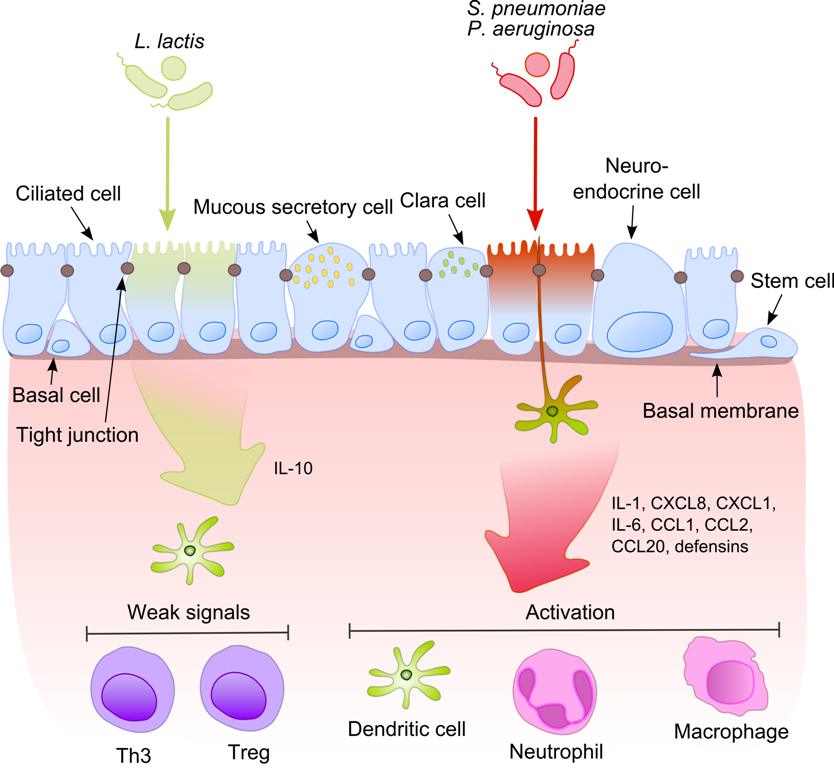|
Gallibacterium Anatis Var. Haemolytica
''Gallibacterium anatis'', formerly ''Pasteurella anatis'', is a Gram-negative, nonmotile, penicillin-sensitive coccobacillus in the family Pasteurellaceae. Members of this family can cause zoonotic infections in humans, typically manifesting as skin or soft tissue infections following animal bites. ''G. anatis'' is primarily found in chickens. Infected chickens may exhibit sinusitis, nasal discharge, a drop in egg production, and low mortality. Vaccination Chicken vaccine, Vaccines for chickens have been developed using bacterial outer membrane vesicles purified by hydrostatic filtration dialysis. Several of these have successfully produced immunity in domestic chicken, domestic chickens. Antenucci et al. (2020) demonstrated the most consistent product and effective immune provocation among HFD OMV processes, but overall HFD has yet to prove itself against other vaccine production techniques. Nonetheless, it is a promising line of research . See also * ''Pasteurella dagmatis' ... [...More Info...] [...Related Items...] OR: [Wikipedia] [Google] [Baidu] |
Gram-negative
Gram-negative bacteria are bacteria that, unlike gram-positive bacteria, do not retain the crystal violet stain used in the Gram staining method of bacterial differentiation. Their defining characteristic is that their cell envelope consists of a thin peptidoglycan cell wall sandwiched between an inner ( cytoplasmic) membrane and an outer membrane. These bacteria are found in all environments that support life on Earth. Within this category, notable species include the model organism '' Escherichia coli'', along with various pathogenic bacteria, such as '' Pseudomonas aeruginosa'', '' Chlamydia trachomatis'', and '' Yersinia pestis''. They pose significant challenges in the medical field due to their outer membrane, which acts as a protective barrier against numerous antibiotics (including penicillin), detergents that would normally damage the inner cell membrane, and the antimicrobial enzyme lysozyme produced by animals as part of their innate immune system. Furthe ... [...More Info...] [...Related Items...] OR: [Wikipedia] [Google] [Baidu] |
American Society For Microbiology
The American Society for Microbiology (ASM), originally the Society of American Bacteriologists, is a professional organization for scientists who study viruses, bacteria, fungi, algae, and protozoa as well as other aspects of microbiology. It was founded in 1899. The Society publishes a variety of scientific journals, textbooks, and other educational materials related to microbiology and infectious diseases. ASM organizes annual meetings, as well as workshops and professional development opportunities for its members. History ASM was founded in 1899 under the name the "Society of American Bacteriologists." In December 1960, it was renamed the "American Society for Microbiology." Mission ASM's mission is "to promote and advance the microbial sciences." The society seeks to accomplish this mission through: * Publishing highly cited publications * Running multi-disciplinary meetings * Deploying resources and expertise around the world * Advocating for scientific research * Fosteri ... [...More Info...] [...Related Items...] OR: [Wikipedia] [Google] [Baidu] |
Zoonoses
A zoonosis (; plural zoonoses) or zoonotic disease is an infectious disease of humans caused by a pathogen (an infectious agent, such as a virus, bacterium, parasite, fungi, or prion) that can jump from a non-human vertebrate to a human. When humans infect non-humans, it is called reverse zoonosis or anthroponosis. Major modern diseases such as Ebola and salmonellosis are zoonoses. HIV was a zoonotic disease transmitted to humans in the early part of the 20th century, though it has now evolved into a separate human-only disease. Human infection with animal influenza viruses is rare, as they do not transmit easily to or among humans. However, avian and swine influenza viruses in particular possess high zoonotic potential, and these occasionally recombine with human strains of the flu and can cause pandemics such as the 2009 swine flu. Zoonoses can be caused by a range of disease pathogens such as emergent viruses, bacteria, fungi and parasites; of 1,415 pathogens known to ... [...More Info...] [...Related Items...] OR: [Wikipedia] [Google] [Baidu] |
Bacterial Diseases
Pathogenic bacteria are bacteria that can cause disease. This article focuses on the bacteria that are pathogenic to humans. Most species of bacteria are harmless and many are beneficial but others can cause infectious diseases. The number of these pathogenic species in humans is estimated to be fewer than a hundred. By contrast, several thousand species are considered part of the gut flora, with a few hundred species present in each individual human's digestive tract. The body is continually exposed to many species of bacteria, including beneficial commensals, which grow on the skin and mucous membranes, and saprophytes, which grow mainly in the soil and in decaying matter. The blood and tissue fluids contain nutrients sufficient to sustain the growth of many bacteria. The body has defence mechanisms that enable it to resist microbial invasion of its tissues and give it a natural immunity or innate resistance against many microorganisms. Pathogenic bacteria are specially ... [...More Info...] [...Related Items...] OR: [Wikipedia] [Google] [Baidu] |
VetBact
The VetBact database contains information about bacteria that are of interest in veterinary medicine. The database was developed at the Swedish University of Agricultural Sciences and the National Veterinary Institute in Uppsala, Sweden. VetBact is primarily intended as a tool for veterinary students and their teachers, but has also proved useful for veterinary practitioners and students attending other academic courses in bacteriology. History The first version of the database appeared in Swedish on the website of the National Veterinary Institute in 2006. The database received a major update and was re-launched as 'VetBakt 1.0' under its own domain name, vetbakt.se, in the following year. In 2010, a bilingual (English/Swedish) version known as 'VetBact 2.0' was released and the domain name was changed to vetbact.org. In 2011, three additional modules (VetBactBlog, VetBactQuiz and VetBactLab) were added to the VetBact website. Contents of the database This database contains ... [...More Info...] [...Related Items...] OR: [Wikipedia] [Google] [Baidu] |
Pasteurella Langaa
''Pasteurella langaa'', is a Gram-negative, nonmotile, penicillin-sensitive coccobacillus of the family Pasteurellaceae The Pasteurellaceae comprise a large family of Gram-negative bacteria. Most members live as commensals on mucosal surfaces of birds and mammals, especially in the upper respiratory tract. Pasteurellaceae are typically rod-shaped, and are a notabl .... Bacteria from this family cause zoonotic infections in humans. These infections manifest themselves as skin or soft tissue infections after an animal bite. See also * '' Pasteurella anatis'' * '' Pasteurella canis'' * '' Pasteurella dagmatis'' * '' Pasteurella stomatis'' References Further reading External links Animal bite infections (healthAtoZ.com)ZipcodeZoo entryUniversity of Göteborg Culture Collection entry Bacterial diseases Zoonoses Pasteurellales Bacteria described in 1985 {{gammaproteobacteria-stub ... [...More Info...] [...Related Items...] OR: [Wikipedia] [Google] [Baidu] |
Pasteurella Stomatis
''Pasteurella stomatis'', is a Gram-negative, nonmotile, penicillin-sensitive coccobacillus of the family Pasteurellaceae. Bacteria from this family cause zoonotic infections in humans. These infections manifest themselves as skin or soft tissue infections after an animal bite. See also * '' Pasteurella anatis'' * '' Pasteurella canis'' * '' Pasteurella dagmatis'' * ''Pasteurella langaa ''Pasteurella langaa'', is a Gram-negative, nonmotile, penicillin-sensitive coccobacillus of the family Pasteurellaceae The Pasteurellaceae comprise a large family of Gram-negative bacteria. Most members live as commensals on mucosal surfaces ...'' References Further reading External links Animal bite infections (healthAtoZ.com)Type strain of ''Pasteurella stomatis'' at Bac''Dive'' - the Bacterial Diversity Metadatabase Bacterial diseases Zoonoses Pasteurellales Bacteria described in 1985 {{gammaproteobacteria-stub ... [...More Info...] [...Related Items...] OR: [Wikipedia] [Google] [Baidu] |
Pasteurella Canis
''Pasteurella canis'' is a Gram-negative, nonmotile, penicillin-sensitive coccobacillus of the family Pasteurellaceae. Bacteria from this family cause zoonotic infections in humans, which manifest themselves as skin or soft-tissue infections after an animal bite. It has been known to cause serious disease in immunocompromised patients. ''Pasteurella'' was first described around 1880 and thought to be associated with chicken cholera and hemorrhagic septicemia in animals. The genus was first cultured in 1885. In 1920, strains of ''Pasteurella'' were isolated and observed in human infections. Nomenclature “''Micrococcus gallicidus''” was the first scientific name used for these bacteria. For a short time, the bacteria were unofficially placed in different genera, such as ''Octopsis'', ''Coccobacillus'', and ''Eucystia''. In 1887, genus “''Pasteurella''” was proposed to honor Louis Pasteur for his critical discoveries in the field of microbiology. Before molecular tech ... [...More Info...] [...Related Items...] OR: [Wikipedia] [Google] [Baidu] |
Pasteurella Dagmatis
''Pasteurella dagmatis'' is a Gram-negative, nonmotile, penicillin-sensitive coccobacillus of the family Pasteurellaceae. ''P. dagmatis'' is oxidase and indole positive . Bacteria from this family cause zoonotic infections in humans. These infections manifest themselves as skin or soft tissue infections after an animal bite. It has been known to cause serious disease in immunocompromised patients. See also * '' Pasteurella anatis'' * ''Pasteurella canis'' * ''Pasteurella langaa'' * ''Pasteurella stomatis'' * Wound licking * The VetBact The VetBact database contains information about bacteria that are of interest in veterinary medicine. The database was developed at the Swedish University of Agricultural Sciences and the National Veterinary Institute in Uppsala, Sweden. VetBact ... database References External links Animal bite infections (healthAtoZ.com)VetBact.org entryType strain of ''Pasteurella dagmatis'' at Bac''Dive'' - the Bacterial Diversity Metadatabase Bacte ... [...More Info...] [...Related Items...] OR: [Wikipedia] [Google] [Baidu] |
MBio
''mBio'' is a bimonthly peer-reviewed open access scientific journal published by the American Society for Microbiology in association with the American Society for Microbiology#American Academy of Microbiology, American Academy of Microbiology. It covers all aspects of the Microbiology, microbiological sciences, including virology, bacteriology, parasitology, mycology, and allied fields. The journal was established in 2010 with Arturo Casadevall as founding editor-in-chief. Abstracting and indexing The journal is abstracted and indexed in: According to the ''Journal Citation Reports'', the journal has a 2023 impact factor of 5.1. References External links * {{DEFAULTSORT:Mbio Microbiology journals Academic journals established in 2010 Bimonthly journals English-language journals American Society for Microbiology academic journals ... [...More Info...] [...Related Items...] OR: [Wikipedia] [Google] [Baidu] |
Penicillin
Penicillins (P, PCN or PEN) are a group of beta-lactam antibiotic, β-lactam antibiotics originally obtained from ''Penicillium'' Mold (fungus), moulds, principally ''Penicillium chrysogenum, P. chrysogenum'' and ''Penicillium rubens, P. rubens''. Most penicillins in clinical use are synthesised by ''Penicillium chrysogenum, P. chrysogenum'' using industrial fermentation, deep tank fermentation and then purified. A number of natural penicillins have been discovered, but only two purified compounds are in clinical use: benzylpenicillin, penicillin G (intramuscular injection, intramuscular or Intravenous therapy, intravenous use) and phenoxymethylpenicillin, penicillin V (given by mouth). Penicillins were among the first medications to be effective against many bacterial infections caused by staphylococcus, staphylococci and streptococcus, streptococci. They are still widely used today for various bacterial infections, though many types of bacteria have developed antibiotic res ... [...More Info...] [...Related Items...] OR: [Wikipedia] [Google] [Baidu] |
Domestic Chicken
The chicken (''Gallus gallus domesticus'') is a domesticated subspecies of the red junglefowl (''Gallus gallus''), originally native to Southeast Asia. It was first domesticated around 8,000 years ago and is now one of the most common and widespread domesticated animals in the world. Chickens are primarily kept for their meat and eggs, though they are also kept as pets. As of 2023, the global chicken population exceeds 26.5 billion, with more than 50 billion birds produced annually for consumption. Specialized breeds such as broilers and laying hens have been developed for meat and egg production, respectively. A hen bred for laying can produce over 300 eggs per year. Chickens are social animals with complex vocalizations and behaviors, and feature prominently in folklore, religion, and literature across many societies. Their economic importance makes them a central component of global animal husbandry and agriculture. Nomenclature Terms for chickens include: * ''Bid ... [...More Info...] [...Related Items...] OR: [Wikipedia] [Google] [Baidu] |




